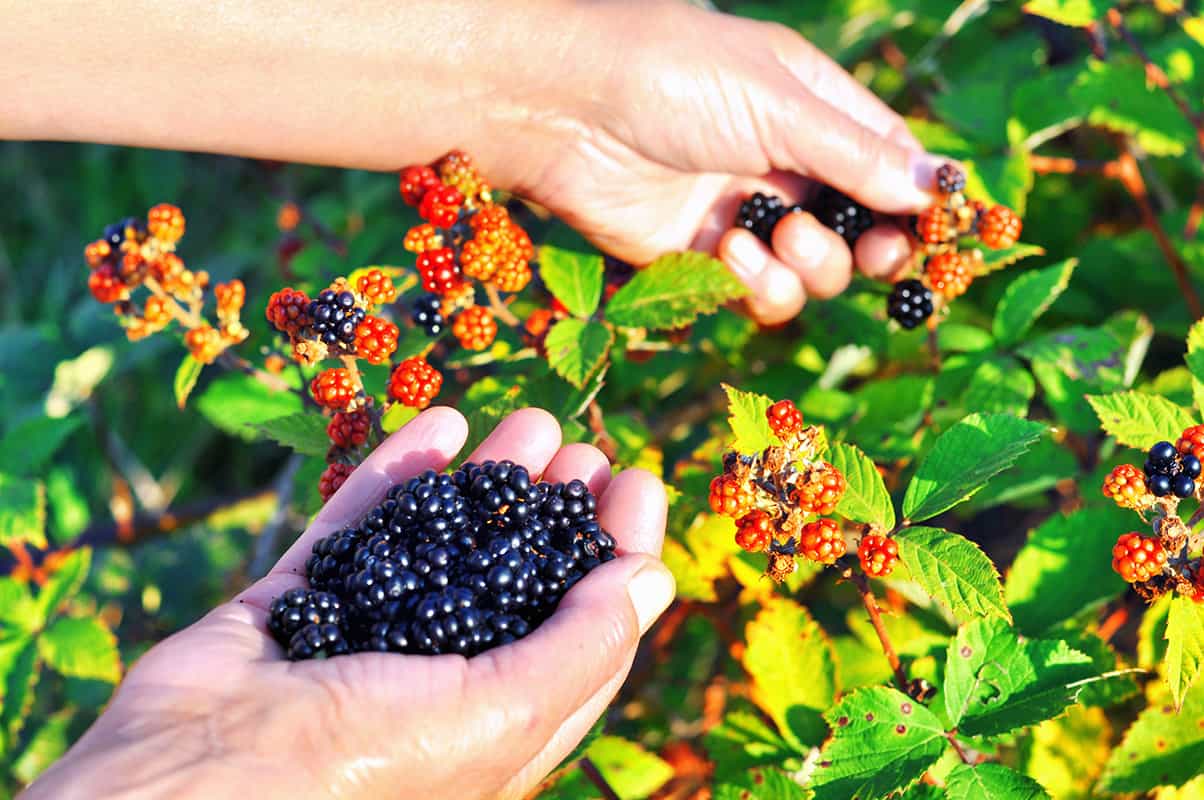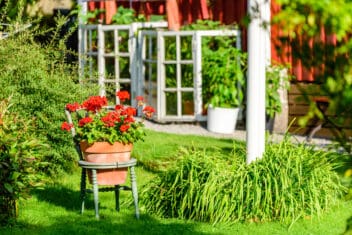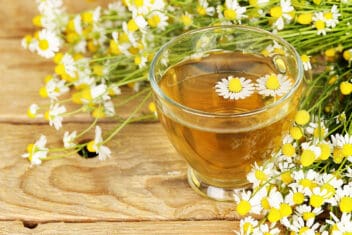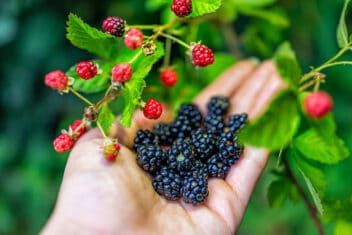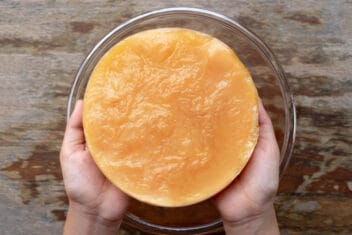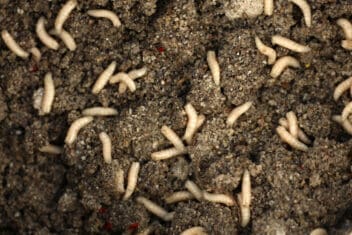Believe it or not, hundreds of unique species of berries exist, waiting for you to forage in the wild. Nearly everyone has one or more Rubus plants in their area that are edible.
If you’re new to foraging, berries are a great place to start. With just a little work, you can end up with a large harvest at no cost!
Let’s look at some of the most common Rubus plants that are safe for foraging.
Rubus Berries You Can Forage
Rubus is a large genus of plants with species found worldwide. Grocery stores carry a few of the most common plants – raspberries and blackberries – but more exist.
The cool thing is that no one truly knows how many Rubus plants are out there. Some say 250, but other estimates are over 700. Some species might still be undiscovered.
It’s impossible to list all of the species in one place, so instead, let’s cover the most common Rubus plants you might find while foraging. All of these are edible and safe to enjoy, but that doesn’t mean they’re all sweet.
Before we begin, if you’re a total beginner at foraging berries please read our other guide about everything you need to forage berries.
Foraging requires knowledge about the edible berries growing in your region. Let’s take a look at some of them:
1. Red Raspberries – Rubus idaeus
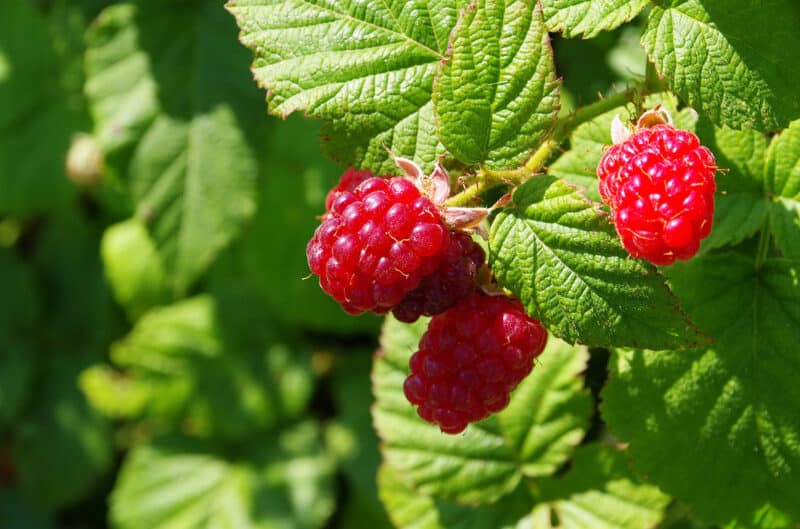
This variety of Rubus plants is one of the most common; you find containers throughout the country in grocery stores. Red raspberries also grow throughout North America, producing red, sweet fruits.
Rubus idaeus are perennials with biennial stems. It takes several years for plants to reach full height, which is five to eight feet tall. The leaves are small with three to five leaflets, and the white flowers are tiny, measuring half an inch in diameter.
2. Black Raspberries – Rubus occidentalis L.
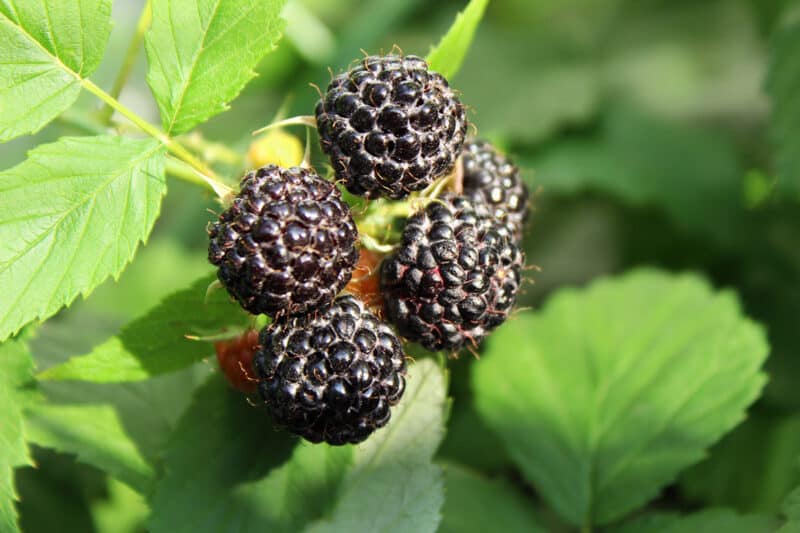
Anyone living in eastern North America should have no problem finding patches of wild black raspberries. The berries are dark purple with a sweet yet tart flavor.
Black raspberries are a deciduous shrub that reaches between seven and ten feet tall. However, their height in the wild heavily depends on how much sun the bushes receive.
The leaves are pinnate with five leaflets, and the flowers have long, slender sepals nearly twice as long as the petals.
3. Wild Blackberries – Rubus ulmifolius
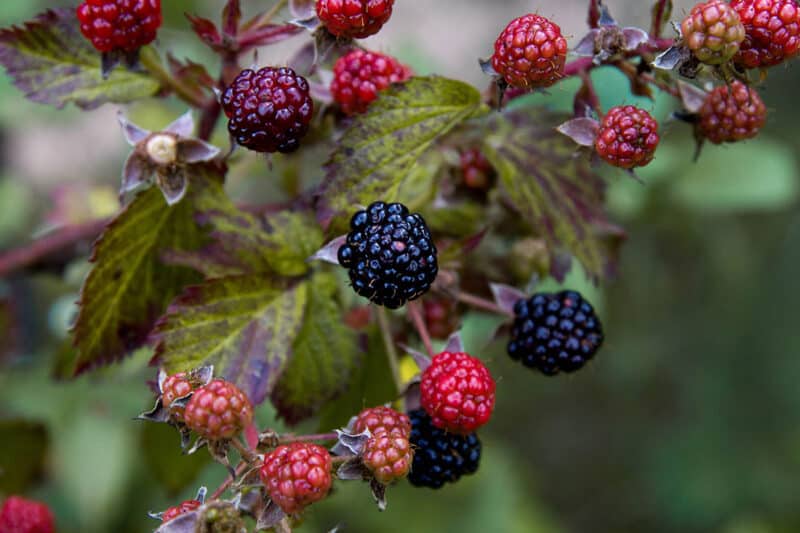
These Rubus plants are a species of wild blackberries that are sometimes called elmleaf blackberry or thornless blackberry. Originally, Rubus ulmifolius originated in Europe and North Africa, but eventually, they became naturalized in parts of the United States.
In some areas, this species is considered invasive. However, the berries are still delicious and enjoyable. Anyone living in California or other parts of the United States can forage and harvest these berries.
Although these bushes often reach up to 17 feet tall, most are between six and eight feet tall. Leaves have three to five leaflets that are green on the upper surface and white on the underside. The flowers are pink or white that produce dark purple, nearly black, berries.
4. American Dewberry – Rubus flagellaris
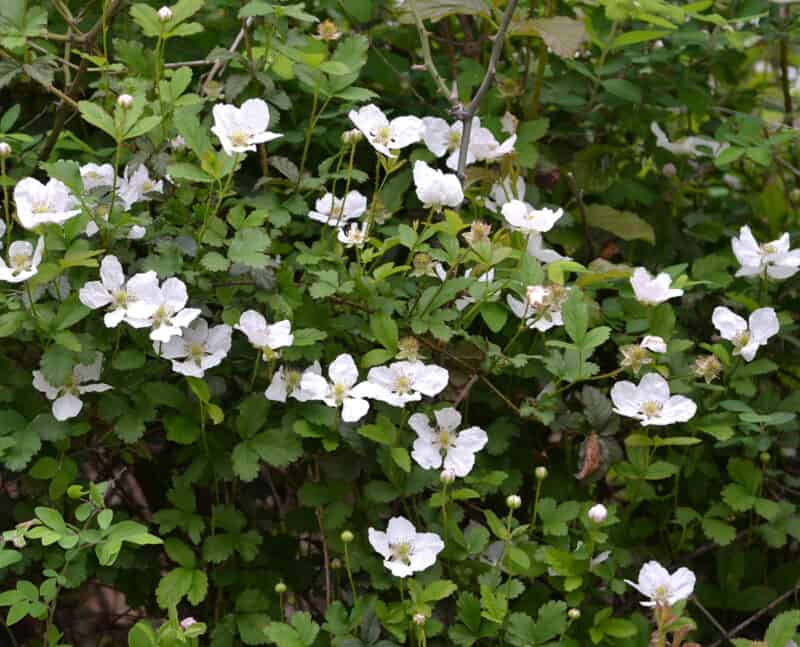
These Rubus plants grow as far south as northern Mexico and over to the eastern and central United States. It grows in various climates, from dry areas to temperate forests.
Rubus flagellaris produces low-growing stems that can be up to 15 feet long. It grows most actively in the mid-spring to early summer, as it produces a five-petaled white flower, eventually turning into berries.
The plants produce blackberries with a strong, tart flavor.
5. White Bark Raspberry – Rubus leucodermis
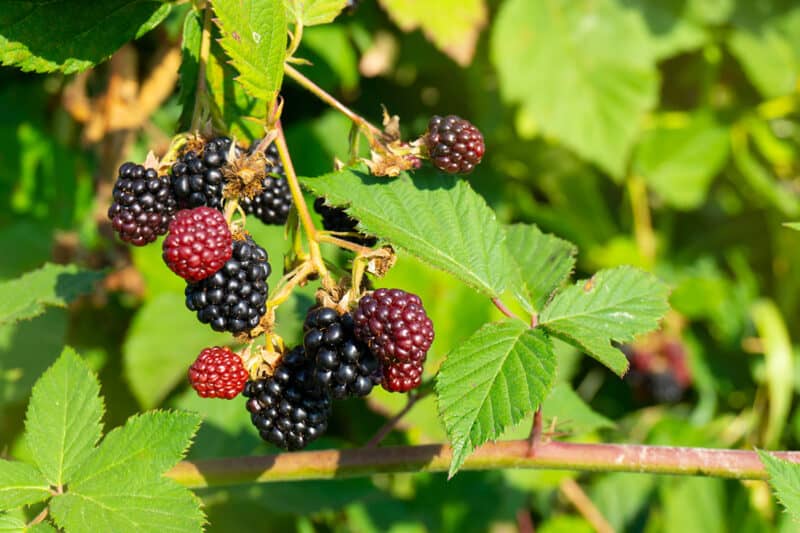
These berries grow throughout western North America from Alaska to northern Mexico. The bushes produce large, dark purple berries that taste similar to blue raspberry flavoring. Believe it or not, that flavor developed after this plant.
This species is closely related to the eastern black raspberry, but the term leucodermis means “white skin” due to the thick, waxy coating over the berry’s surface. However, they don’t taste waxy at all.
These plants reach up to five feet tall, producing leaves with five leaflets. The flowers are white, and sometimes, little purple flowers grow as well.
6. Garden Dewberry – Rubus aboriginum
Known as aboriginal dewberry, this species grows throughout the United States and Mexico, producing black, tart berries. These are especially common throughout the southern Great Plains. In addition, they’re partial to rocky soil or partially shade areas, especially woodlands or abandoned fields.
Garden dewberries grow up to six feet tall, but many are smaller if grown in partial shade. The leaves are ovate with serrated edges, and the flowers are white with five petals similar to other dewberries.
7. Aberdeen Dewberry – Rubus depavitus
The Aberdeen dewberry plant grows in these specific states:
- Ohio
- West Virginia
- New Jersey
- North Carolina
- Maryland
- Kentucky
- Indiana
Similar to other dewberries, the berries are black and tart, produced from a white flower. They bloom from March to June, depending on the amount of sunlight and warmth.
8. Thimbleberry – Rubus parviflorus
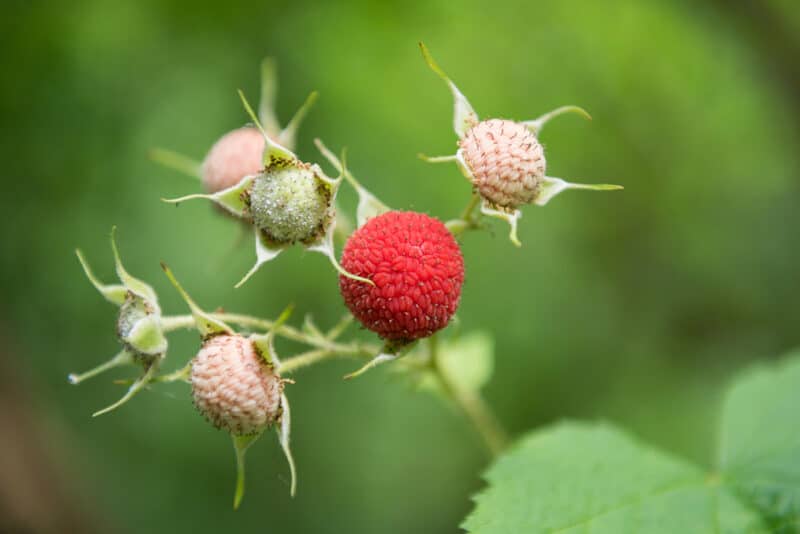
Thimbleberries grow through western North America from California to Alaska. Many confuse thimbleberries with red raspberries; however, they aren’t the same. Thimbleberries are shorter and smaller than raspberries.
The bushes produce berries that are dusty red with a sweet, delightful flavor. Despite the delicious flavor, these berries aren’t commercially grown because the fruits fall apart easily.
These shrubs reach up to eight feet tall, similar to other Rubus species. However, these berries have no prickles, making it easier to forage. The leaves are large, measuring up to eight inches across, with up to five lobes.
9. Salmonberry – Rubus spectabilis
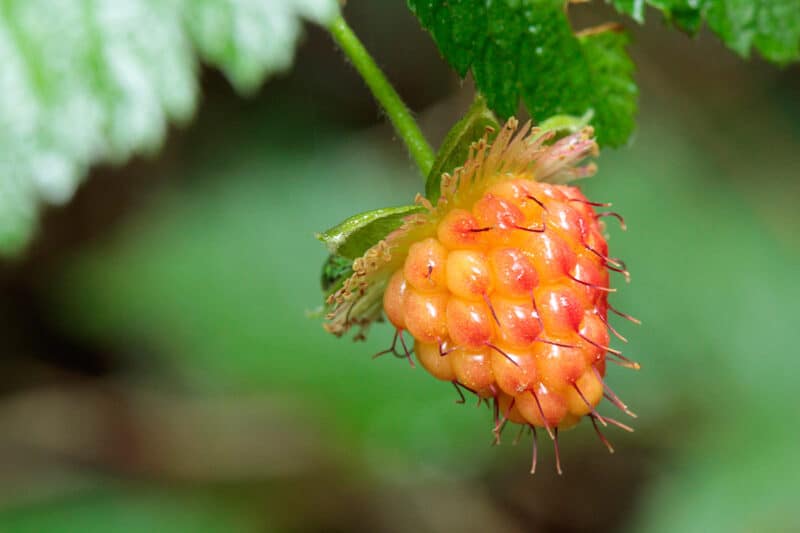
Sometimes called Joffelberry, salmonberries grow in the Pacific Northwest in North America and other frequently wet areas. It grows as far inland as Idaho. The plants produce bright red or rich orange-gold berries.
Salmonberries don’t have a strong flavor, so most don’t select them for fresh eating. Use them to make jams or other preserves, or use them alongside salmon.
These shrubs reach an average of eight feet tall, but they can reach up to 13 feet tall in ideal circumstances. The leaves have three leaflets, and the flowers measure up to 1 1/2 inches in diameter.
Expect the pinkish-purple flowers to ripen into berries from May to late July.
10. Swamp Dewberry – Rubus hispidus
Often called bristly dewberry or bristly groundberry, this species grows throughout central and eastern North America. The branches are woody vines that reach up to eight feet long, producing dark purple, close to black berries.
Swamp dewberries are quite bitter, so most people avoid eating them. Since they have a strong color, use these berries as a natural dye, or add lots of sugar to them.
The leaves typically have three leaflets, but sometimes, five leaflets appear. The flowers measure nearly one inch in diameter, consisting of five white petals. Expect these bushes to bloom during early to mid-summer.
11. Cloudberry – Rubus chamaemorus

Sometimes called Nordicberry or low-bush salmonberry, cloudberry plants produce sunset pink-orange to golden-colored berries. When the berries are unripe, they are red.
Cloudberry plants grow between four to ten feet high, and the leaves have between five and seven lobes. The white flowers produce large fruits after pollination, sometime in the summer months.
Cloudberries are common in Nordic countries, such as Russia and Finland. These berries are also found throughout northern Canada and northern states such as Alaska, New Hampshire, Maine, and New York.
12. Arctic Blackberry – Rubus arcticus
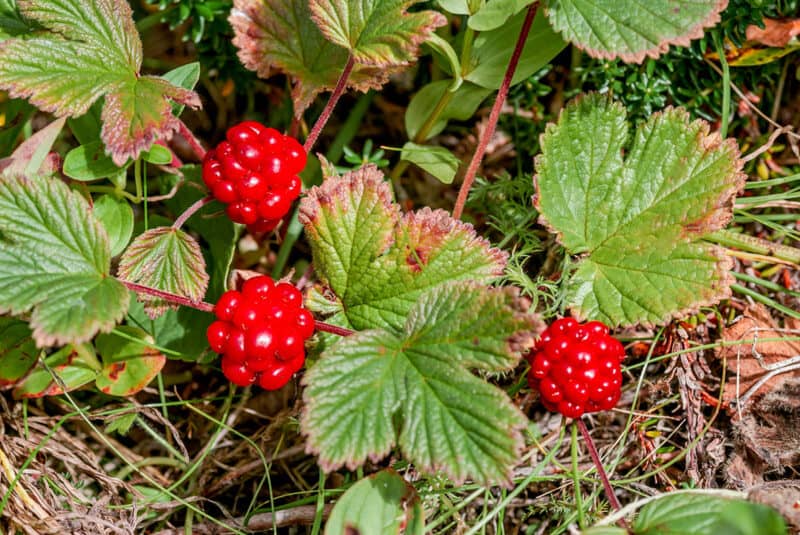
Many people refer to these berries are Arctic raspberries or Arctic bramble. They originate in areas such as Scandinavia, Russia, Poland, and other cold nations. In the United States, Arctic blackberries grow in parts of Alaska, Oregon, Colorado, Maine, and Michigan.
The plants only reach up to one foot tall with pink, red, or magenta flowers. These berries are dark red or deep purple and sweet, and well worth the effort to forage. Many people consider them a delicacy and perfect for various culinary dishes.
13. Smooth Blackberry – Rubus canadensis
This species goes by a range of names, such as Canadian blackberry or thornless blackberry. It grows wild throughout central and eastern Canada, as well as the eastern United States. Don’t be surprised if you find this plant in both wild forests and abandon sites in the middle of the city.
Obviously, the berries are smooth and black with a sweet flavor. The plants measure between seven and ten feet tall with clusters of up to 25 flowers.
14. California Blackberry – Rubus ursinus
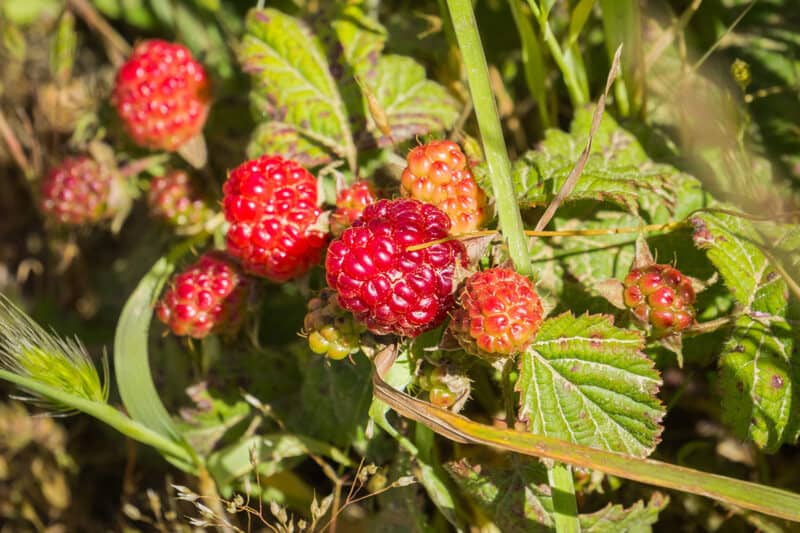
Often called California Dewberry or Pacific Blackberry, this plant sticks to western North America. It’s found in California, Idaho, Montana, Oregon, Washington, and British Columbia.
California blackberries reach up to five feet tall and six feet wide. The leaves have between one and five leaflets, but three are most common. These berries vary in color from dark purple to dark red and even black. No matter the color, all are very sweet and fragrant.
15. Himalayan Blackberry – Rubus armeniacus
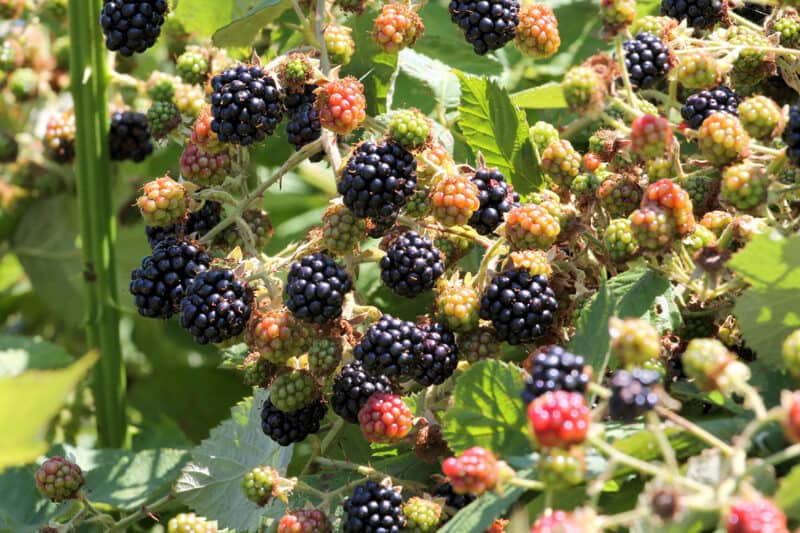
Depending on who you ask, this berry is either a horrible, noxious weed or a marvelous source of foraged food. Originally from Northern Iran and Armenia, it has since invaded many parts of North America.
This large, spiny shrub has become notorious along the northwest coast for filling in just about any spot that it can. You’ll often see it along roadsides and in abandoned fields.
The berries aren’t as sweet as others on this list, but one bush can give you a gallon of berries and they aren’t hard to forage. Just cook the berries down with some sugar to reduce the tartness.
